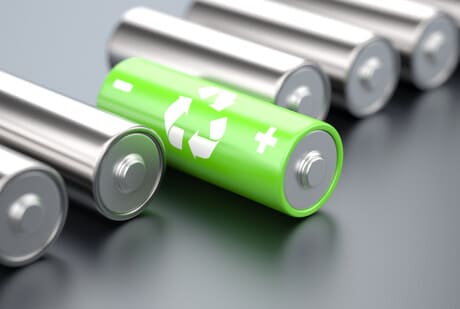Aluminum radical battery- Promising more sustainable power
Team AL Circle
2023-12-08
Batteries have a pivotal role in helping us fulfil our daily responsibilities. The importance of batteries extends far beyond simply charging up standard devices. In fact, they are the unsung heroes of the fast-paced, technology-driven world. However, regular batteries contain hazardous materials like mercury, cadmium, and lead, which can poison humans and animals and cause potential harm to the environment when disposed of in landfills or open areas.
A single battery is enough to contaminate water and soil. It does not disintegrate easily and stays in the environment for a considerable timespan. So, what exactly should we do? How do we keep using batteries without compromising on sustainability goals? Well, aluminium radical batteries are the solution. Aluminium radical batteries allow us to enjoy all the benefits of traditional batteries without having to impact our immediate surroundings.
So, let us delve deeper into what aluminium radical batteries are all about and how they pave the path towards a more sustainable future.

What are aluminium radical batteries?
Aluminium radical batteries, also known as aluminium-ion batteries or AIBs, are a groundbreaking innovation in the field of sustainable energy solutions. The batteries entirely revolutionise the way in which we charge our devices. Unlike traditional batteries, AIBs are free from harmful materials and pose no harm to the environment. Aluminium radicals are used as charge carriers in these batteries.
With aluminium radical batteries, we enjoy enhanced safety. As organic radicals are used in designing the batteries, the chances of fires and explosions are significantly reduced. This makes them a safer option for electronic devices and vehicles. The batteries also have high energy density. They can be used for long hours without requiring frequent charging.
Scientists from Flinders University in South Australia and Zhejiang Sci-Tech University in China have reported the development of the first stage of AIBs in the Journal of America Chemistry*. The batteries are a huge advancement over traditional batteries and will have a wide range of industrial applications, making them an ideal choice for charging electronic devices.
How do the aluminium radical batteries work?
Aluminium radical batteries use water-based electrolytes. The electrolytes are completely stable in air and fire-retardant. The Al3+ ions flow through the electrolyte from the anode to the cathode. The ions then react with the stable radicals to form a stabilised compound. The aluminium radical batteries have a 110 mAh g–1 capacity over 800 cycles and can deliver a stable voltage output of 1.25 volts. The loss per cycle is significantly low, with only 0.028% loss per cycle.
Professor Zhongfan Jia of Flinders University aims to use biodegradable material for designing soft- pack batteries in the future. This will make the product safer and more sustainable. Multi-ion organic batteries also have better charge storage capabilities than commonly used lithium-ion batteries, making them more suitable for frequent use.
One drawback of the latest aluminium-ion batteries is the slow movement of Al3+ ion complexes, resulting in low cathode efficiency. The easiest way to address this challenge would be to use organic conjugated polymers as cathodes. However, that would again lead to poor battery power output. So, attempts are being made to use stable radicals in the battery systems. This would not only solve the problem of low cathode efficiency, but the power output would also remain unharmed.
What makes aluminium radical batteries sustainable energy storage systems?
One of the major features of AIBs is their sustainability. The batteries contain aluminium radicals, which are available in abundant quantities on Earth. Aluminium is also quite easy to extract. The extraction process can be carried out quite easily without harming the environment in any possible way. This makes the batteries an environmentally friendly option. The batteries can be recycled easily. So, there won’t be any need to dispose of the batteries at the end of their lifespan. Also, as water-based electrolytes are used, these batteries are considerably safer.
Key takeaways
The aluminium radical batteries have attracted the attention of people from across the world. This is mainly because of the fact that aluminium is the third-most abundant element on the planet. The easy availability of aluminium makes it convenient for scientists to unleash its power to generate energy. The batteries would lead to the development of low-cost energy storage systems. As aluminium is not harmful and is completely recyclable, the sustainability goals can also be achieved easily.
Categories
Raw Materials
Scrap
Consumables
Primary Aluminium
Secondary Aluminium
Equipment
Technology
Downstream Products
Finished Products
Utilities
Services
Others
Recent Blogs
Subscribe to newsletter
Connect with us











